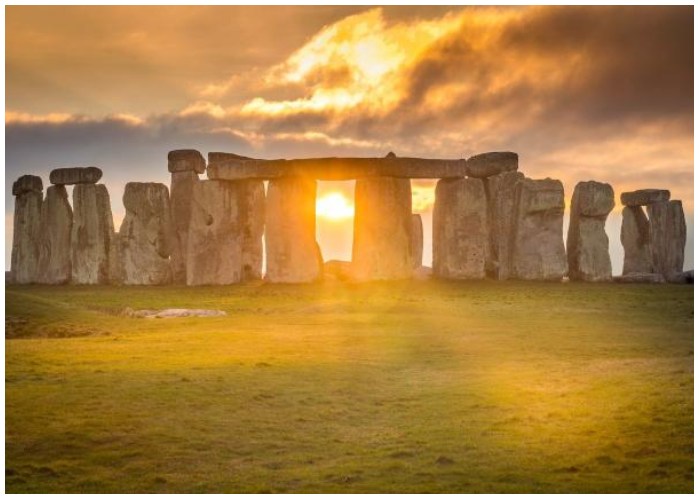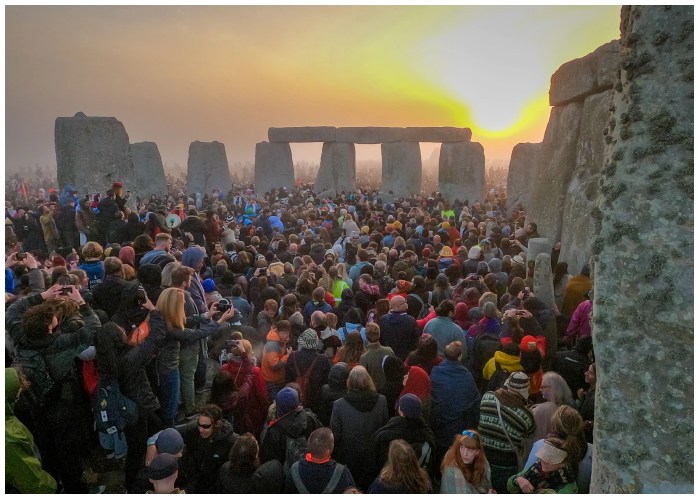The summer solstice at Stonehenge is a time-honored tradition that attracts thousands of visitors from around the world. This year, approximately 15,000 people gathered at the ancient monument to witness the sunrise, just days after the site was targeted by protesters. Despite the recent controversy, the event was a joyous occasion, filled with cheers, smiles, and prayers as the sun rose over the iconic stones at 4:52 am. Managed by English Heritage, the celebration was also livestreamed, allowing over 200,000 people to join the experience virtually.

A Chilly Morning with a Majestic Sunrise
On the morning of the solstice, those present at Stonehenge were greeted by a chilly, misty field as they awaited the sunrise. The event took place against the backdrop of the recent protest by Just Stop Oil, which had led to the arrest of two individuals for allegedly causing damage to the monument. Many attendees expressed frustration over the protest, feeling that it was misguided and disrespectful to the historical significance of Stonehenge. Despite this, the solstice celebration continued peacefully, with attendees embracing the ancient tradition and the sense of community it fosters.
The clear highlight of the morning was the moment the sun glinted over the horizon, illuminating the Heel Stone and casting rays into the heart of the Stone Circle. This spectacle, believed to have been observed for thousands of years, symbolizes the changing seasons and the longest day of the year. The awe-inspiring sight reaffirmed the cultural and spiritual importance of Stonehenge, drawing visitors into a shared moment of reflection and connection.
Preservation and Challenges
The recent protest at Stonehenge, where orange paint was sprayed on the monument, posed significant challenges for preservation efforts. English Heritage, responsible for the site’s maintenance, reported that the paint had been removed with no visible damage, although concerns remained about the potential long-term impact on the fragile stones and rare lichens. This incident highlighted the delicate balance between public access and the need to protect and preserve such a historically significant site.
Many attendees voiced their disapproval of the protest, arguing that it detracted from the sacredness and historical value of Stonehenge. They felt that the act was not only an inappropriate form of protest but also potentially harmful to the monument. The swift response from English Heritage and local authorities ensured that the solstice celebration could proceed without further incident, maintaining the site’s integrity and allowing visitors to enjoy the event.

The Solstice Tradition Continues
Stonehenge has been a focal point for solstice celebrations for millennia, with its alignment perfectly capturing the sunrise on the longest day of the year. This ancient tradition continues to draw people from diverse backgrounds, united by the desire to witness this natural phenomenon and partake in the communal experience it offers. The event’s atmosphere was described as joyous and peaceful, with participants reveling in the beauty of the sunrise and the historical significance of their surroundings.
The summer solstice at Stonehenge is not just a celebration of the longest day but also a testament to human ingenuity and our enduring connection to nature. The alignment of the monument with the midsummer sunrise and midwinter sunset demonstrates the advanced understanding of astronomy possessed by its builders. Today, this alignment continues to captivate and inspire, drawing thousands to the site each year.

The Rich History of Stonehenge
Stonehenge, located in Wiltshire, England, is one of the most famous prehistoric monuments in the world. It was constructed in several stages, with the earliest portion dating back to around 3000 BC. The site originally consisted of a circular earthwork enclosure, used for ceremonial or ritual purposes. Over the next millennium, it evolved with the addition of massive sarsen stones and smaller bluestones, transported from distant regions. The precise methods and reasons for its construction remain subjects of speculation and research, but it is widely believed to have served as an ancient observatory, a place of worship, and a burial ground.
In conclusion, the summer solstice at Stonehenge remains a vibrant and meaningful tradition, celebrating both the natural world and human heritage. Despite recent challenges, the event was a success, bringing together people from near and far to witness the majestic sunrise. As we continue to explore and protect our historical sites, events like the solstice at Stonehenge remind us of the importance of preserving our cultural legacy while fostering a sense of community and shared wonder.